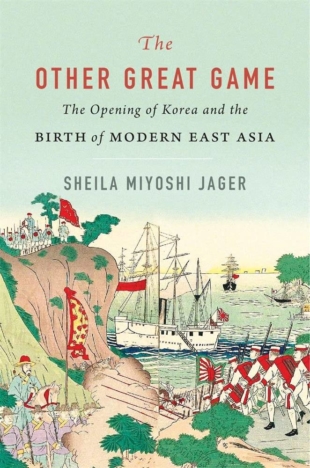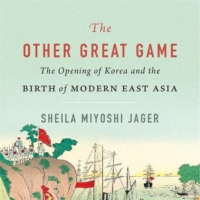The spring of 1905 was difficult for Russia. A year into its conflict with Japan, it had yet to score a single major victory. Some blamed incompetent leadership — one general was described as “deaf, aged and jittery” — while others lamented an overall lack of initiative.
Then, there was intelligence, which was spotty at best: Half the time, the Russians did not even know where the enemy was. Perhaps worst of all was a disease of the mind that seemed to affect much of the top brass, particularly the tsar and his entourage in far away St. Petersburg: hubris. Few had taken Japan seriously. This proved a costly mistake.
On their end, the Japanese were leaving nothing to chance. And unlike the Russians, they knew how to generate momentum. Their opening salvo on Feb. 8, 1904 had been a surprise attack on Port Arthur, a strategic naval base at the tip of the Liaodong Peninsula, which Russia had occupied since 1897. It was not the devastating blow that some had hoped for, but it gave Japan enough room to land troops unopposed on the west coast of Korea. By the end of the month, Tokyo had already achieved its primary objective: boot the Russians out of the Hermit Kingdom. The wind never turned.
The 1905 Portsmouth Treaty, which concluded the war in Tokyo’s favor, was the culmination of more than three decades of jockeying between China, Russia and Japan for the domination of northeast Asia. It was not the end of the story however. It merely closed the first chapter.

As Sheila Miyoshi Jager demonstrates in “The Other Great Game,” her ambitious and wide-ranging new book, the tensions that developed at the time reverberate to this day. Many of the current problems — the political division of the Korean Peninsula, the unresolved status of Taiwan, the territorial dispute between Russia and Japan over the Northern Territories, to say nothing of the scratchy, if now improving, relationship between Korea and Japan — all these find their roots in the geopolitical maneuvering and military clashes of the late 19th century.
It had not always been this way. For the better part of two centuries, from the Manchu conquest of China in 1644 to the First Opium War of 1839, stability had largely prevailed in northeast Asia. The regimes in Beijing, Seoul and Tokyo were all firmly in place. The balance of power held steady.
Russia’s push to the Pacific changed all that. In 1860, Count Nikolai Ignatiev arrived in Beijing, where he coaxed a Chinese government enfeebled by internal rebellions and external aggressions to hand over huge swaths of Manchu land abutting the Amur and Ussuri rivers. This moved the Russian far eastern border south by almost 1,000 kilometers, all the way down to Korea. Before long, the tsar was inviting workers from the peninsula to settle his new and largely empty territory. The border began to blur.
Japanese policymakers were not amused. Many feared that Russia’s long-term goal was to push further south and seize control of Korea. This was the mid-1870s, when Japan was moving full-speed ahead with its Westernization program. What Korea needed, Meiji leaders thought, was something similar. Only by opening up, modernizing its bureaucracy and establishing a network of diplomatic alliances with Japan, the U.S. and others would Korea be able to mitigate the Russian threat.
But change never comes easy. In China, officials were split. Many were loath to relinquish the Qing’s traditional role as Korea’s suzerain. At the same time, the Confucian elite in Korea was dismissive of Japan’s modernization efforts and opposed to following a similar path. Acrimonious debates gradually morphed into sharp political divisions.
“These (...) would continue to widen, giving rise to turmoil at home and drawing foreign powers ever more deeply into the maelstrom of Korean politics,” writes Miyoshi Jager.
What was at stake was the prerogative to shape the future of Korea. In the end, Japan went to war twice — first with China in 1894-95, and again with Russia a decade later — in order to secure this capability. We live with the consequences to this day.
“The Other Great Game” explains how it all happened. The first part of the book is truly magisterial. Miyoshi Jager describes with brio the new social, economic and political forces that eroded the norms that had governed regional interactions for centuries. She sketches engaging portraits of the main characters and describes their skulduggery in fascinating detail — the botched but ultimately successful plot in 1895 by Japan’s chief envoy to murder the Korean Queen, a supporter of closer relations with Russia, is particularly gruesome.
The narrative falters somewhat in the second half. The author’s description of the campaigns of the Russo-Japanese war is meticulous, but this focus on the trees of the conflict blurs the geopolitical forest. Nevertheless, the result is a comprehensive and illuminating history of northeast Asia at a time of tremendous change.



![A Japanese soldier walks by civilians during the Russo-Japanese War. | H. W. WILSON, JAPAN’S FIGHT FOR FREEDOM [LONDON: AMALGAMATED PRESS, 1904–1906], 1:300](https://www.japantimes.co.jp/uploads/imported_images/uploads/2023/07/np_file_237443.jpeg)
![A Japanese soldier walks by civilians during the Russo-Japanese War. | H. W. WILSON, JAPAN’S FIGHT FOR FREEDOM [LONDON: AMALGAMATED PRESS, 1904–1906], 1:300](https://www.japantimes.co.jp/uploads/imported_images/uploads/2023/07/np_file_237443-200x200.jpeg)
